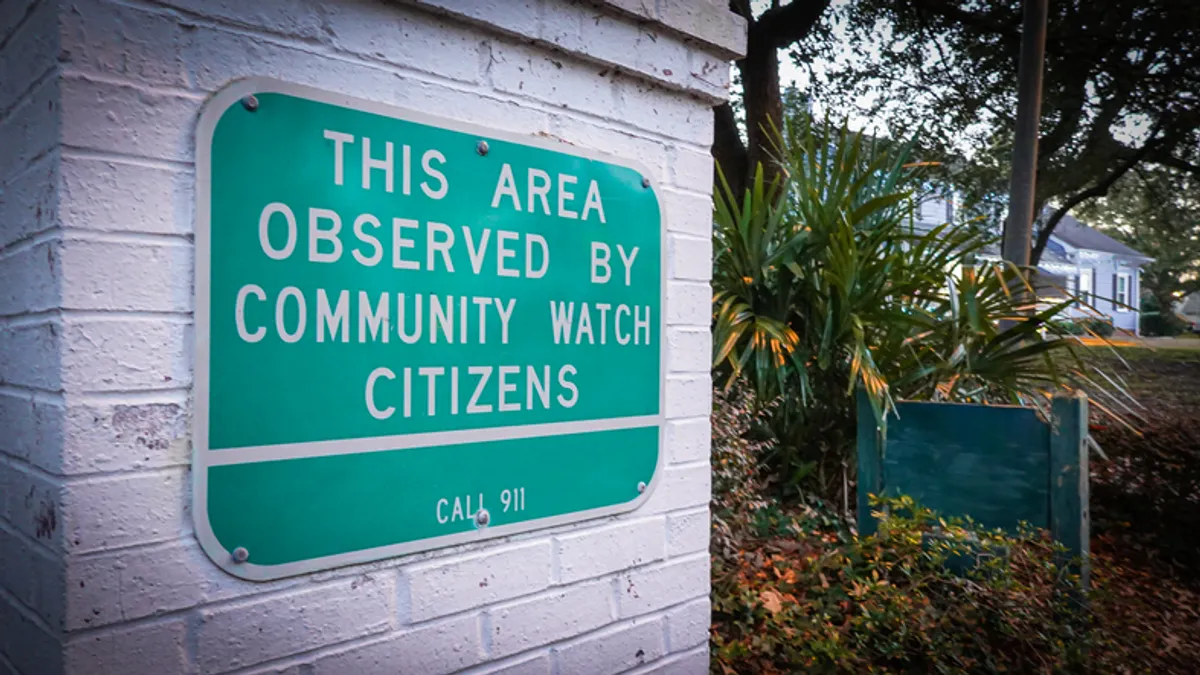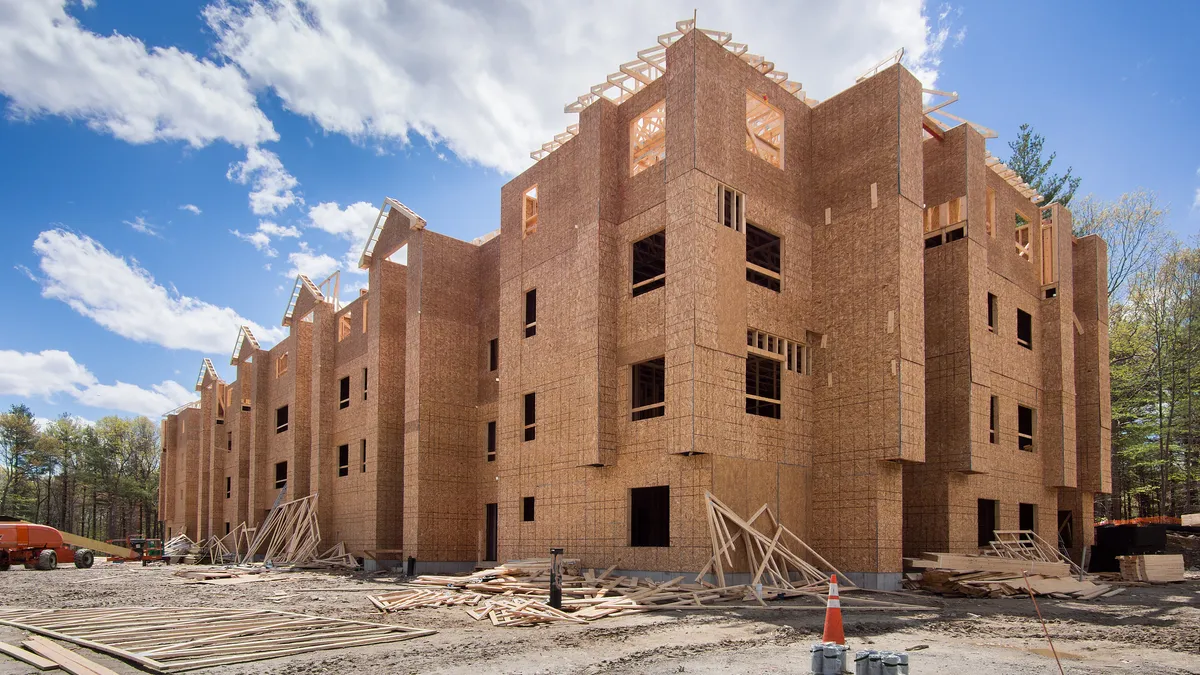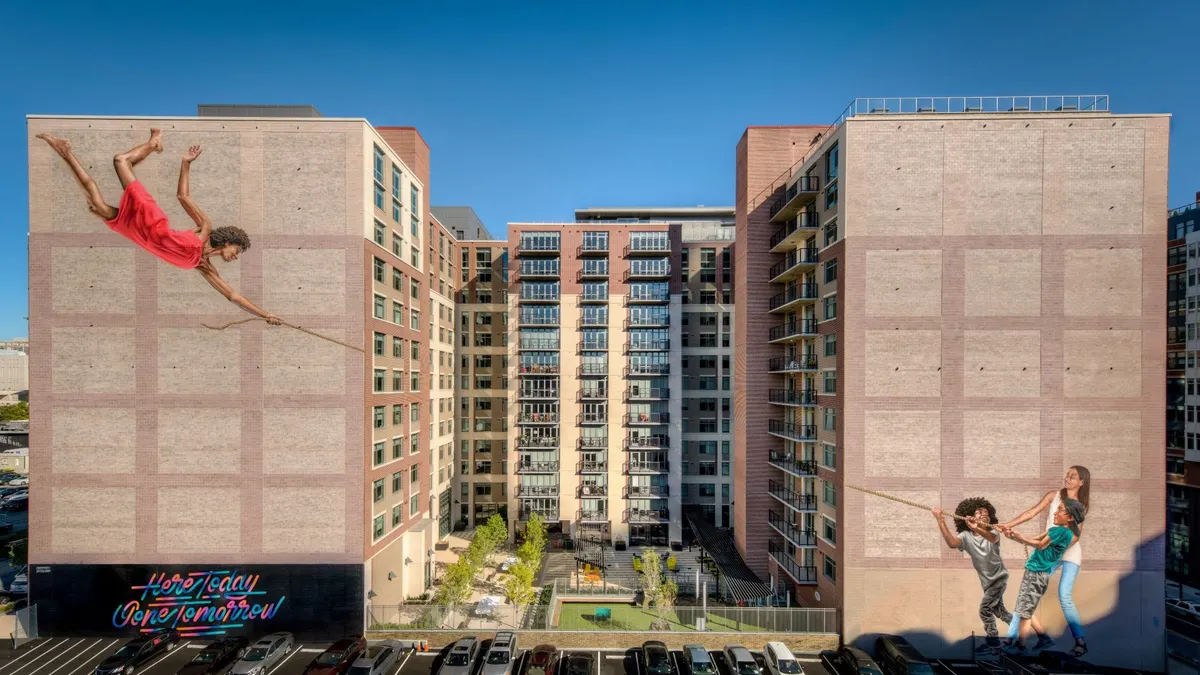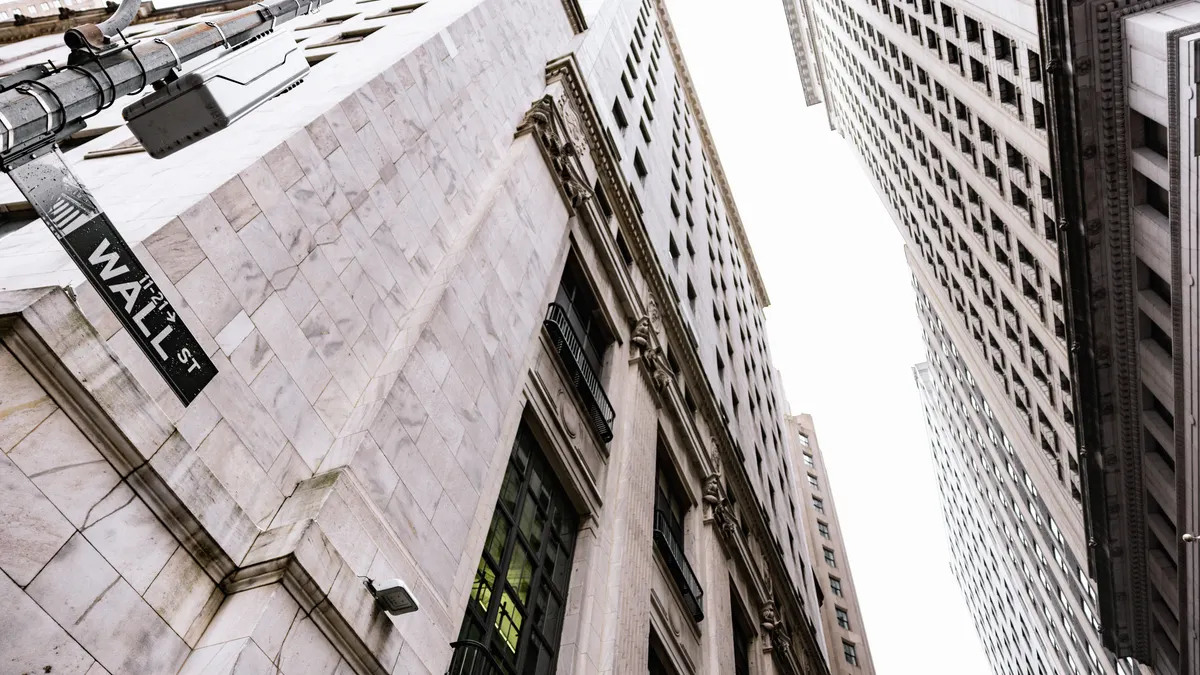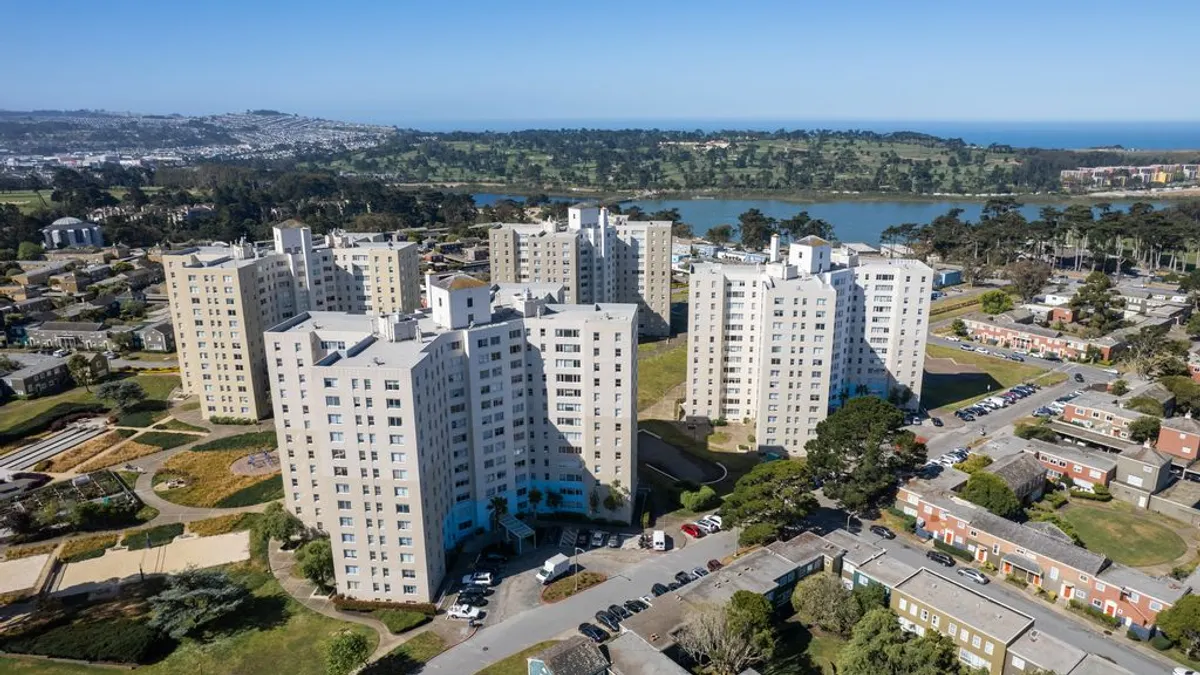
Ryan Tujague is a crime prevention officer with nearly 20 years of experience at the Pleasanton Police Department in Pleasanton, California. As a member of the department’s Alternate Response Unit, he has assisted hundreds of housing communities in enhancing security to effectively deter crime across the San Francisco Bay Area. Opinions are the author’s own.
Since I joined the police force in 2006, I've come across my fair share of multifamily properties with security systems that fall short of being effective. Most property managers want to do right by their tenants — but even small oversights can lead to big security vulnerabilities.
I now work as a crime prevention officer, specializing in crime prevention through environmental design. I've helped hundreds of homeowners and property managers make changes to their security strategies to better protect their properties.
No two properties are the exact same, but in the years I've been doing this, I've seen countless property managers make the same security mistakes. Thankfully, these missteps are easily avoidable, and fixing them can make a big difference for tenant safety. Here are some of the most common:
Using dim or tinted lighting
Motion lights are a must-have for multifamily properties. They help create a well-illuminated environment that deters suspicious activity. Ensuring that pathways, parking areas and entrances are brightly lit can significantly enhance security.
But don't just get any light. The wrong lights can make it harder to prevent crime. For instance, say your tenant witnesses a package theft. But under the dim yellow lighting, they weren't sure if the thief's shirt was yellow or white. Without that important info, law enforcement may be less likely to identify the right person. What to do instead:
- Install white LED lights. They're bright and don't distort colors, making it easier for law enforcement to identify suspicious individuals.
- Ensure your lights have shields so they don't shine into tenants' windows.
- Check your lighting fixtures frequently, and maintain as needed to prevent any dark spots on property.
- Trim any trees or plants growing in front of lights.
Letting trees and landscaping overgrow
Tenants love green space. When it's properly landscaped, it can make the property feel more peaceful and polished. But too much green can be a problem, especially when it starts to obstruct views or create hiding spots for potential intruders.
Overgrown trees and shrubs may shield criminal activities from view, allowing them to go unnoticed by tenants or security cameras. What to do instead:
- Regularly prune trees and shrubs to ensure clear sightlines across the property and remove any potential hiding places.
- Choose low and thorny species for areas near pathways or windows to deter unwanted visitors.
- Maintain a clear perimeter around building entrances and exits to enhance visibility.
- Ensure branches do not block lighting or come too close to cameras, as this can impede their effectiveness in capturing crucial footage.
Installing security cameras without professional monitoring
When it comes time to install security cameras, a lot of folks tend to focus on the tech aspect. They want the best zooming functionality, the highest image quality and the most advanced motion detection.
But specs matter a lot less than the monitoring aspect. Even if your cameras can zoom to spot a crime from a mile away, your ability to disrupt that crime will still depend on who's watching the footage.
Many property managers think that they can depend on their on-site security guards to monitor the footage. Other managers think that they can handle watching the cameras themselves. But every person, guard or otherwise, is still limited by human attention spans and the demands of multiple responsibilities. What to do instead:
- Invest in cameras with 24/7 monitoring by live guards, especially ones that use AI-powered cameras to detect suspicious behavior.
- Set up real-time alerts for suspicious activity to ensure quick responses, reducing the likelihood of incidents escalating before intervention can occur.
- Regularly review and update your surveillance strategy to adapt to new security concerns and technological advancements.
- Install license plate readers for your parking areas. If a security incident occurs in the vicinity, having a record of vehicle activity can be invaluable for investigations.
Having building numbers that aren’t visible from the street
Too often, I come across apartment complexes with building numbers that are too small, hard to see, or covered by trees. At best, this means that it's hard for guests or delivery drivers to find the right building. At worst, this could put your tenants at risk of not getting the help they need in an emergency.
It's simple: If an emergency takes place, then time is of the essence. Emergency services do not want to waste precious moments searching for the right building. What to do instead:
- Make sure that all building numbers are legible, placed at eye level, and easy to see from the street. If the average person would be able to drive by without seeing it, then it's not clear enough.
- Use contrasting colors to help the numbers stand out against the building's facade.
- Maintain regular landscaping to prevent trees and shrubs from concealing these numbers.
- Use light or reflective numbers to enhance visibility in low-light conditions.
Installing package lockers in unsecured areas
Package lockers have been marketed as the solution for package theft, but they're not infallible. Depending on where they're placed, they could actually increase the risk of theft.
Picture this: An apartment installs their package locker in a common area in the outdoor hallway. That way, it's easily accessible for both delivery carriers and tenants, right?
But over time, packages could get left outside the locker. It could be because tenants haven't picked up yesterday's deliveries yet, and the lockers are all full. Or it could be that the delivery driver just can't be bothered to open up the locker.
Now, instead of packages being left by the tenants' doors, they're all left in one area — making package theft even easier. What to do instead:
- Place your lockers in well-lit, secure locations. If you have a secure garage, that's a great place to put them.
- Install monitored surveillance cameras to ensure that any suspicious activity around the lockers is recorded.
- Implement a notification system that alerts tenants when a package has arrived, encouraging prompt pickup and reducing the risk of overflow.
- Report when delivery drivers leave packages outside of the designated locker space. The courier (e.g. Amazon, Fedex, etc) will likely assign a new driver to your property so it doesn't happen again.
Reporting emergencies to on-site guards instead of the police
If you need someone to conduct routine monitoring or check in on a non-urgent situation, then your security guard can help with that. But if there's an emergency — a theft, break-in or any other criminal activity — it is crucial to report it directly to the police.
By contacting law enforcement immediately, you ensure that trained professionals are on their way to address the situation promptly. On-site security guards play a valuable role in maintaining order and providing assistance, but they may not always be equipped to handle serious incidents.
Plus, security guards are easy to spot from afar. If a theft is in progress, and your guard drives up in a lit-up security vehicle, it can give the perpetrator ample time to run and hide. What to do instead:
- Call 911 in the case of any threats to life and property. This includes emergencies such as fires, medical crises or break-ins.
- Call your local non-emergency number in the case of any non-urgent issues that still require police attention. This might include noise complaints, suspicious behavior, or vandalism that doesn't pose an immediate threat.
- Train your security guards and staff to ensure they are familiar with both emergency and non-emergency protocols.
- Have the non-emergency number readily available to staff so they can quickly make the appropriate call when necessary.
Not having a neighborhood watch program
Starting a neighborhood watch is a free and effective way to help prevent crime in your community. By bringing residents together, these programs not only boost community spirit but also help keep criminal activities at bay.
Local police departments usually have crime prevention officers who can help get your neighborhood watch program started. A close-knit community that looks out for each other creates an environment where crime is less likely. When you invest in your tenants, they'll invest in you.
Not having one of these programs can make your properties more likely to experience crime. What to do instead:
- Call your local police department and ask for a crime prevention officer who can help organize a neighborhood watch in your community.
- Set up a communication platform where neighbors can quickly share information about any suspicious activities. This can involve using apps or social media groups specifically designed for real-time neighborhood alerts.
- Hold regular community meetings to discuss any concerns or changes in the neighborhood, updates about recent incidents and to strategize crime prevention methods.
- Educate tenants on safety measures, such as using deadbolt locks, being vigilant about unfamiliar vehicles or visitors in the area and promptly reporting suspicious behavior using the correct channels.


